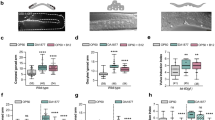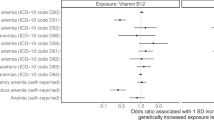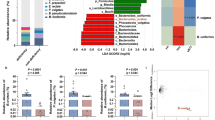Abstract
VERY little is known about the mechanism by which large molecules enter the epithelial cells of the small intestine. Vitamin B12 is one such molecule the absorption of which is dependent on its combination with an even larger molecule, gastric intrinsic factor. This report describes the means by which vitamin B12 is absorbed in infant rats, at a time when intrinsic factor production is poorly developed1.
This is a preview of subscription content, access via your institution
Access options
Subscribe to this journal
Receive 51 print issues and online access
$199.00 per year
only $3.90 per issue
Buy this article
- Purchase on SpringerLink
- Instant access to full article PDF
Prices may be subject to local taxes which are calculated during checkout
Similar content being viewed by others
References
Boass, A., and Wilson, T. H., Amer. J. Physiol., 204, 101 (1963).
Clark, S. L., J. Biophys. Biochem. Cytol., 5, 41 (1959).
Halliday, R., Proc. Roy. Soc., B, 143, 408 (1955).
Booth, C. C., Chanarin, I., Anderson, B. B., and Mollin, D. L., Brit. J. Haematol., 3, 253 (1957).
Author information
Authors and Affiliations
Rights and permissions
About this article
Cite this article
GALLAGHER, N. Mechanism and Site of Vitamin B12 Absorption in Suckling Rats. Nature 222, 877–878 (1969). https://doi.org/10.1038/222877a0
Received:
Issue date:
DOI: https://doi.org/10.1038/222877a0



